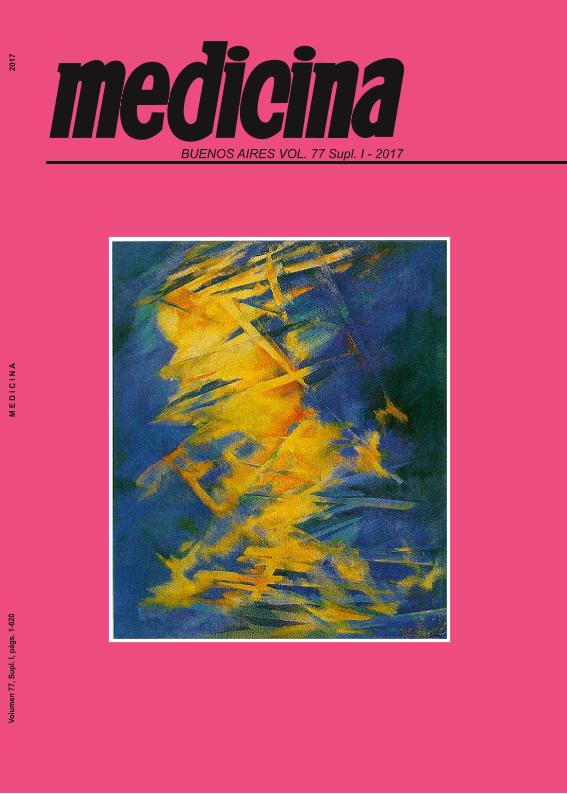Evento
Multiple template based homology model of active state D2 dopamine receptor
Lobon, Exequiel Ignacio; Bogado, María Lucrecia ; Angelina, Emilio Luis
; Angelina, Emilio Luis ; Luchi, Adriano Martín
; Luchi, Adriano Martín ; Sosa, Gladis Laura; Peruchena, Nelida Maria
; Sosa, Gladis Laura; Peruchena, Nelida Maria
 ; Angelina, Emilio Luis
; Angelina, Emilio Luis ; Luchi, Adriano Martín
; Luchi, Adriano Martín ; Sosa, Gladis Laura; Peruchena, Nelida Maria
; Sosa, Gladis Laura; Peruchena, Nelida Maria
Tipo del evento:
Reunión
Nombre del evento:
LXII Sociedad Argentina de Investigación Clínica; LIII Sociedad Argentina de Investigación Bioquímica y Biología Molecular; LXV Sociedad Argentina de Inmunología, Sociedad Argentina de Andrología; XLVI Sociedad Argentina de Biofísica; XIX Sociedad Argentina de Biología; XLIX Sociedad Argentina de Farmacología Experimental, Reunión Anual de la Sociedad Argentina de Fisiología; Reunión de la Sociedad Argentina de Hematología y XXIX Reunión Anual de la Sociedad Argentina de Protozoología
Fecha del evento:
13/11/2017
Institución Organizadora:
Sociedad Argentina de Investigación Clínica;
Asociación Argentina de Farmacología Experimental;
Sociedad Argentina de Biología;
Sociedad Argentina de Protozoología;
Asociación Argentina de Nanomedicinas;
Asociación Argentina de Ciencia y Tecnología de Animales de Laboratorio;
Título de la revista:
Medicina (Buenos Aires)
Editorial:
Fundación Revista Medicina
ISSN:
1669-9106
Idioma:
Inglés
Clasificación temática:
Resumen
Dopamine is an essential neurotransmitter in the central nervous system and exerts its effects through the activation of five subtypes of G protein coupled receptors (D1 to D5). Among subtypes, D2 has high therapeutic relevance for treatment of Parkinson's disease, schizophrenia and other disorders in the central nervous system. While D2 structure has not been solved yet, an homology model (HM) of D2 based on the known structure of the closely related D3 was reported. In the solved structure D3 has been captured in its inactive state, therefore the resulting models also would be in the inactive state.In this work we constructed an HM of D2 in the activated, G protein coupled state. To build the model two templates were considered: D3 (PDB-ID: 3PBL) due to its high degree of sequence identity to D2 (78% in the TM helices) and the fully activated 2 adrenergic receptor (PDB-ID: 3SN6) to model mostly the intracellular region of the receptor in the activated, G protein coupled state.Sequence of D2 in its long form (NP_000786.1) and of Gi protein inhibitory alpha subunit (PDB-ID: 1GP2) were aligned with the template sequences. The alignment was then used to construct several 3-D models of D2 with the program Modeller 9.15. The model with the lowest value of the Modeller objective function was subjected to quality assessment with PROCHECK. The model was then inserted into an heterogeneous biological membrane using CHARMM-GUI server and subjected to MD simulations with Amber14 for further refinement, in order to get a 3-D modelcloser to the native form of the protein.HM based on a single model requires the choice of a crystallized structure highly similar to the receptor under study, while the strategy used in this work, of alignment with multiple models, involves the excision of the receptor in several domains and the subsequent selection of the most appropriate template for each of these domains, this strategy being very useful to increase the accuracy of the models.
Palabras clave:
HOMOLOGY MODELLING
,
DOPAMINE
,
GPCR
,
MOLECULAR DYNAMICS
Archivos asociados
Licencia
Identificadores
Colecciones
Eventos(IQUIBA-NEA)
Eventos de INSTITUTO DE QUIMICA BASICA Y APLICADA DEL NORDESTE ARGENTINO
Eventos de INSTITUTO DE QUIMICA BASICA Y APLICADA DEL NORDESTE ARGENTINO
Citación
Multiple template based homology model of active state D2 dopamine receptor; LXII Sociedad Argentina de Investigación Clínica; LIII Sociedad Argentina de Investigación Bioquímica y Biología Molecular; LXV Sociedad Argentina de Inmunología, Sociedad Argentina de Andrología; XLVI Sociedad Argentina de Biofísica; XIX Sociedad Argentina de Biología; XLIX Sociedad Argentina de Farmacología Experimental, Reunión Anual de la Sociedad Argentina de Fisiología; Reunión de la Sociedad Argentina de Hematología y XXIX Reunión Anual de la Sociedad Argentina de Protozoología; Argentina; 2017; 620-620
Compartir



